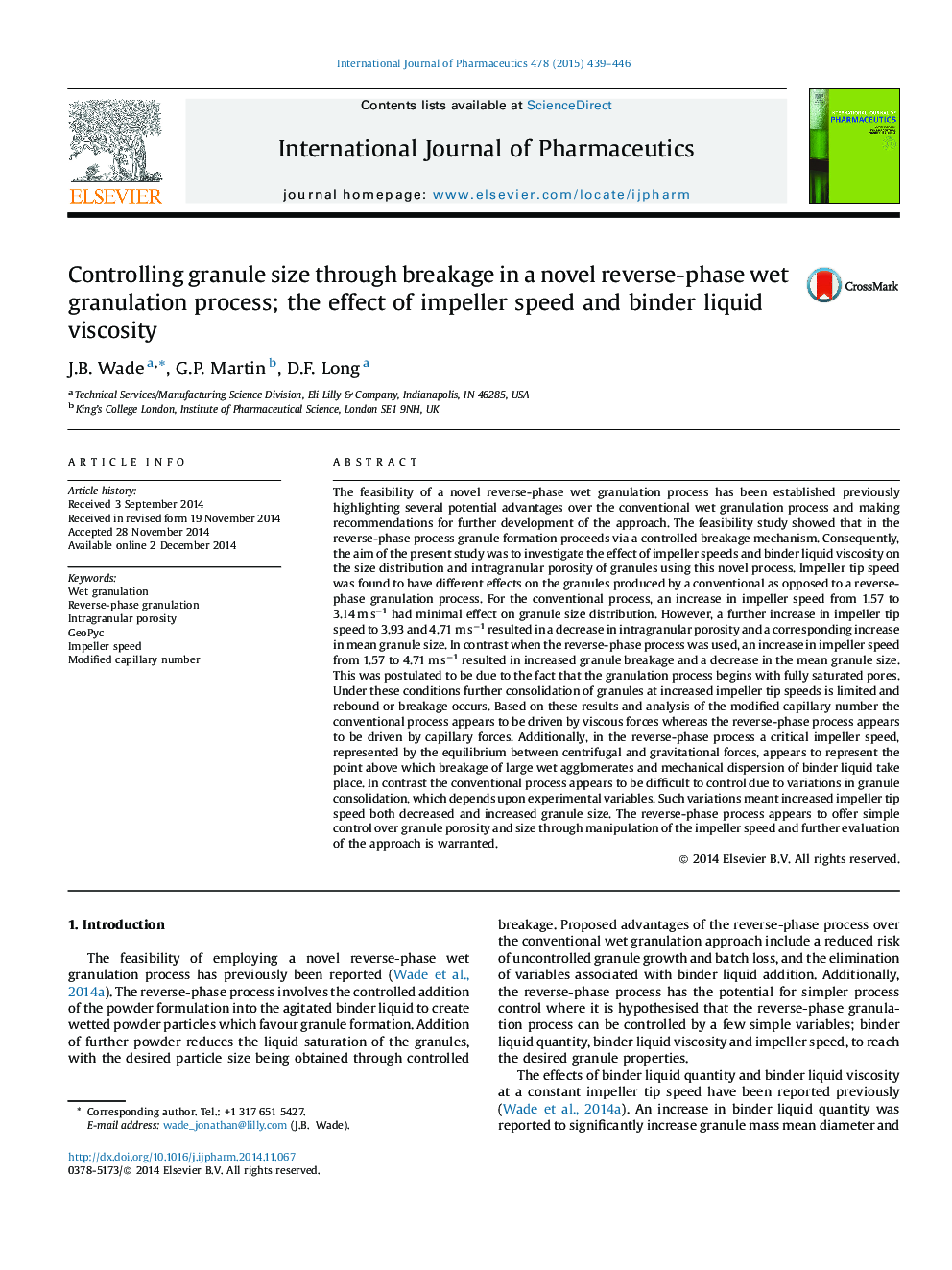| کد مقاله | کد نشریه | سال انتشار | مقاله انگلیسی | نسخه تمام متن |
|---|---|---|---|---|
| 2501742 | 1557347 | 2015 | 8 صفحه PDF | دانلود رایگان |
The feasibility of a novel reverse-phase wet granulation process has been established previously highlighting several potential advantages over the conventional wet granulation process and making recommendations for further development of the approach. The feasibility study showed that in the reverse-phase process granule formation proceeds via a controlled breakage mechanism. Consequently, the aim of the present study was to investigate the effect of impeller speeds and binder liquid viscosity on the size distribution and intragranular porosity of granules using this novel process. Impeller tip speed was found to have different effects on the granules produced by a conventional as opposed to a reverse-phase granulation process. For the conventional process, an increase in impeller speed from 1.57 to 3.14 m s−1 had minimal effect on granule size distribution. However, a further increase in impeller tip speed to 3.93 and 4.71 m s−1 resulted in a decrease in intragranular porosity and a corresponding increase in mean granule size. In contrast when the reverse-phase process was used, an increase in impeller speed from 1.57 to 4.71 m s−1 resulted in increased granule breakage and a decrease in the mean granule size. This was postulated to be due to the fact that the granulation process begins with fully saturated pores. Under these conditions further consolidation of granules at increased impeller tip speeds is limited and rebound or breakage occurs. Based on these results and analysis of the modified capillary number the conventional process appears to be driven by viscous forces whereas the reverse-phase process appears to be driven by capillary forces. Additionally, in the reverse-phase process a critical impeller speed, represented by the equilibrium between centrifugal and gravitational forces, appears to represent the point above which breakage of large wet agglomerates and mechanical dispersion of binder liquid take place. In contrast the conventional process appears to be difficult to control due to variations in granule consolidation, which depends upon experimental variables. Such variations meant increased impeller tip speed both decreased and increased granule size. The reverse-phase process appears to offer simple control over granule porosity and size through manipulation of the impeller speed and further evaluation of the approach is warranted.
Figure optionsDownload high-quality image (138 K)Download as PowerPoint slide
Journal: International Journal of Pharmaceutics - Volume 478, Issue 2, 30 January 2015, Pages 439–446
